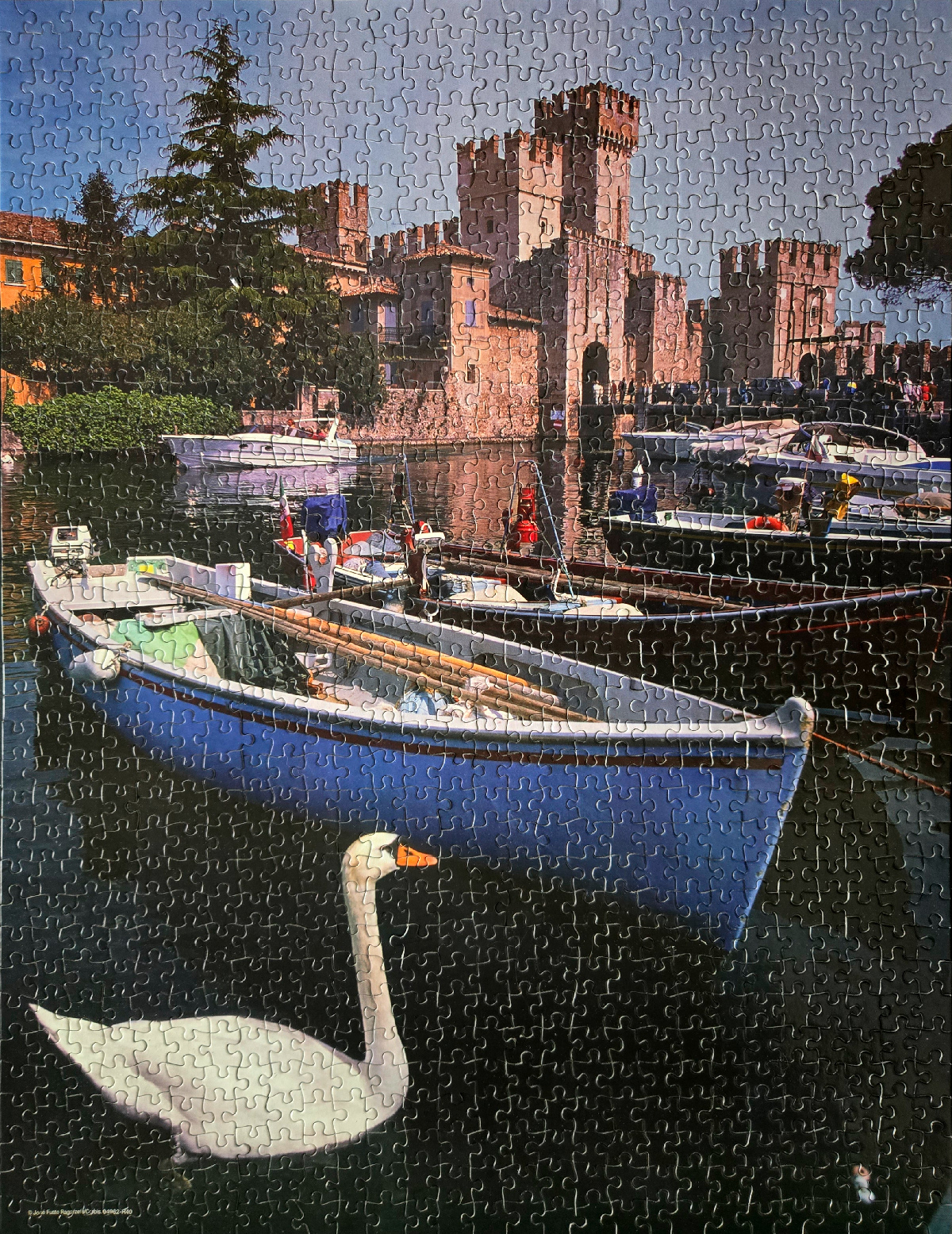
Size: 1000 pieces
Available for purchase on eBay
Dimensions: 51.12 cm x 66.52 cm
Manufacturer: Mega Brands
Photographer: José Fuste Raga
Box: photo
Tag: Europe
Field of Tulips
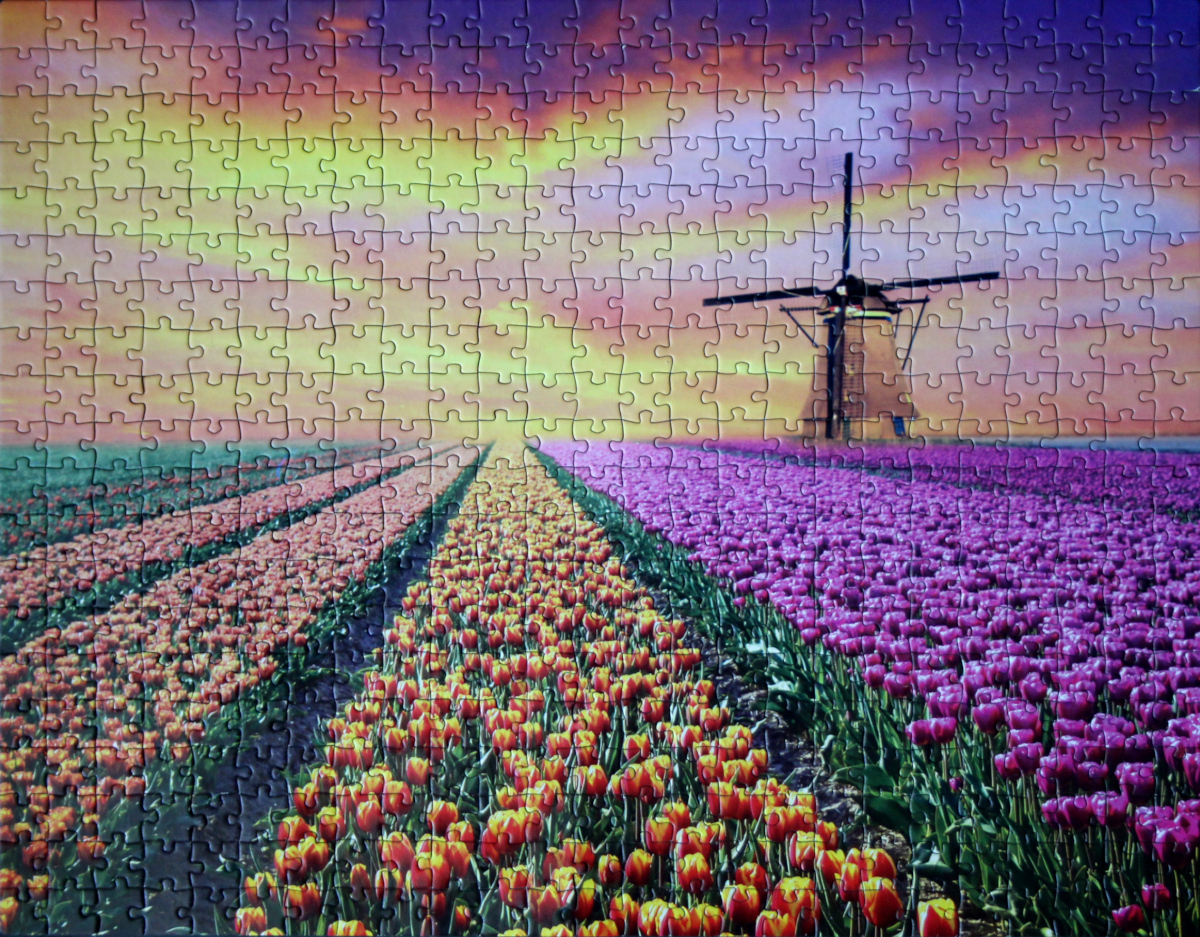
Size: 500 pieces
Available for purchase on eBay
Dimensions: 36 cm x 46 cm
Manufacturer: Karmin International, Sku 764859
Box: photo
Santorini, Greece
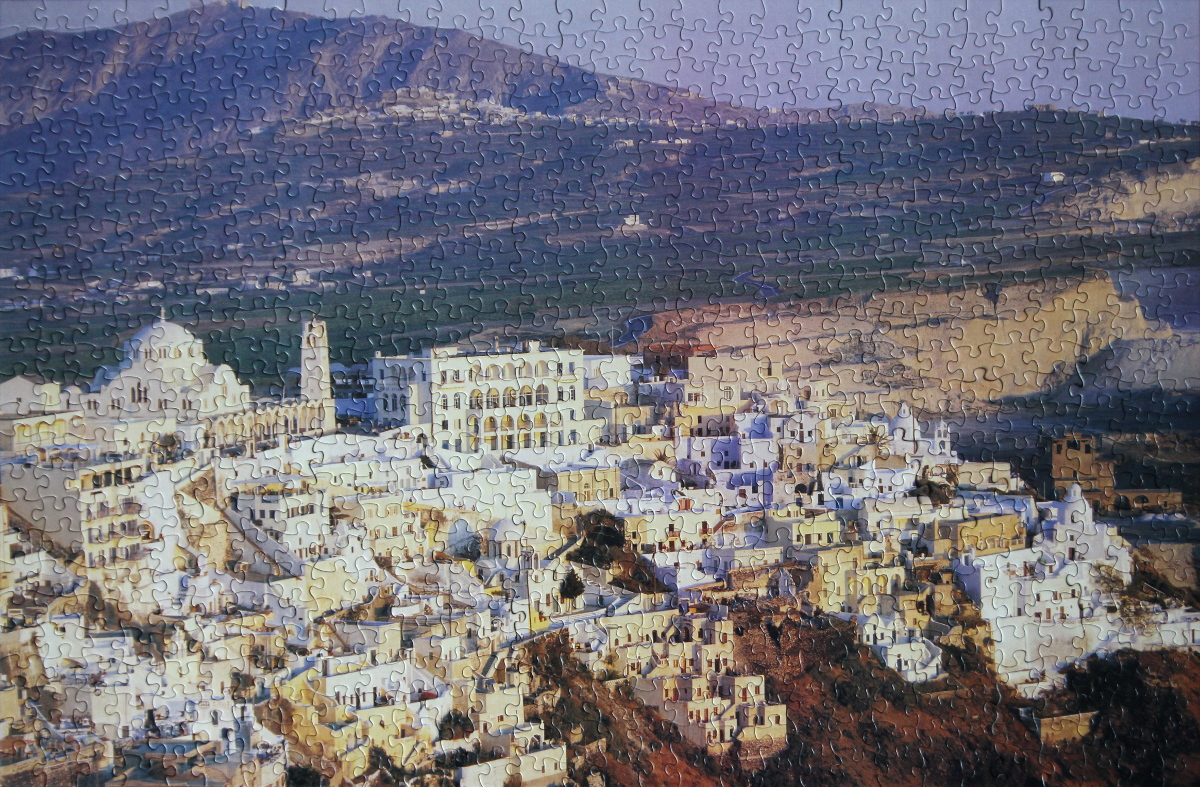
Size: 750 pieces
Available for purchase on eBay
Dimensions: 39.4 cm x 59.7 cm
Manufacturer: The Canadian Group, #40510-31
Box: photo
Mediterranean Windows
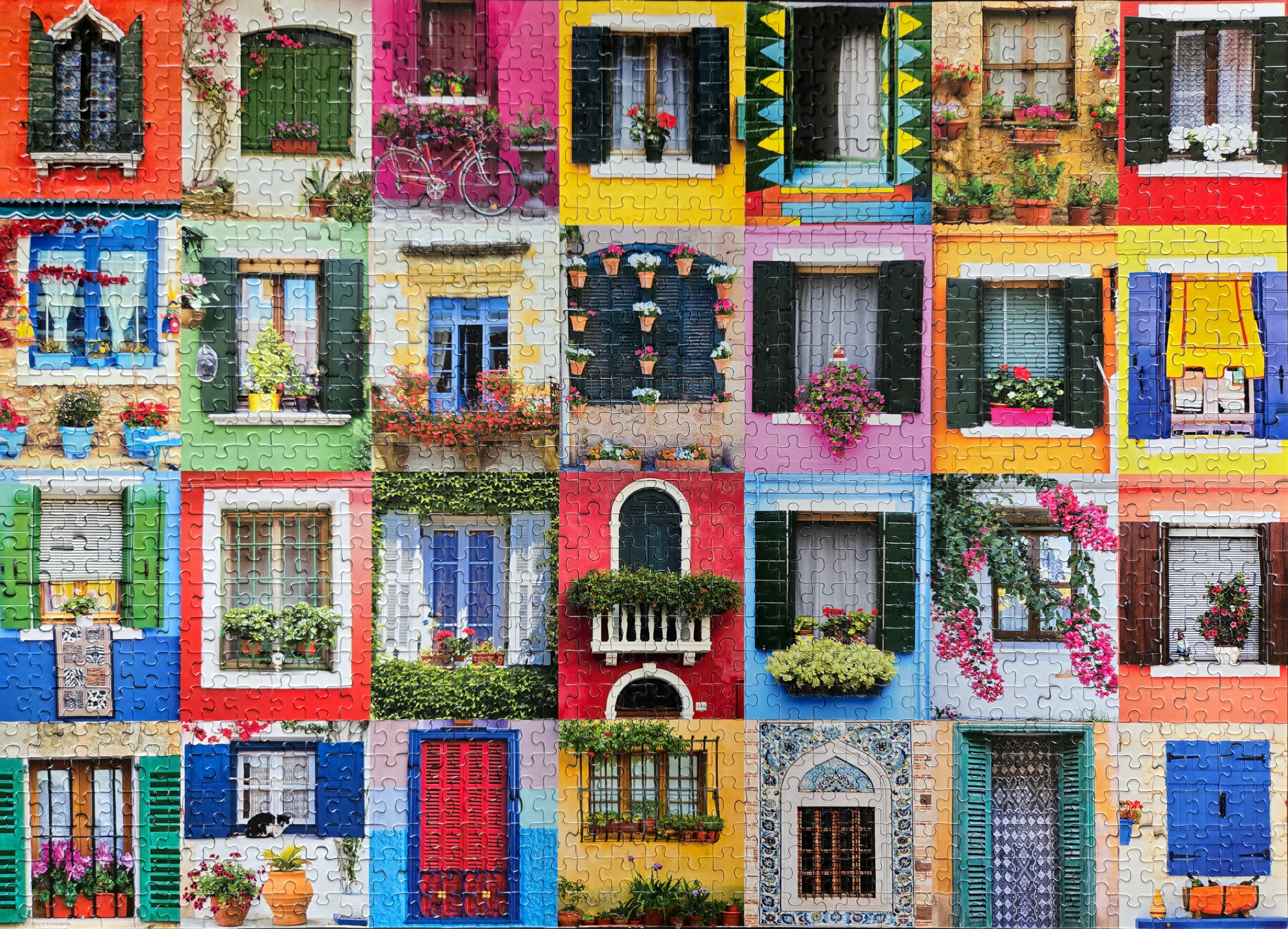
Size: 1000 pieces
Available for purchase on eBay
Dimensions: 48.89 cm x 67.63 cm
Manufacturer: Eurographics Puzzles, 6000-5350
Box: photo
Hintersee Lake, Germany
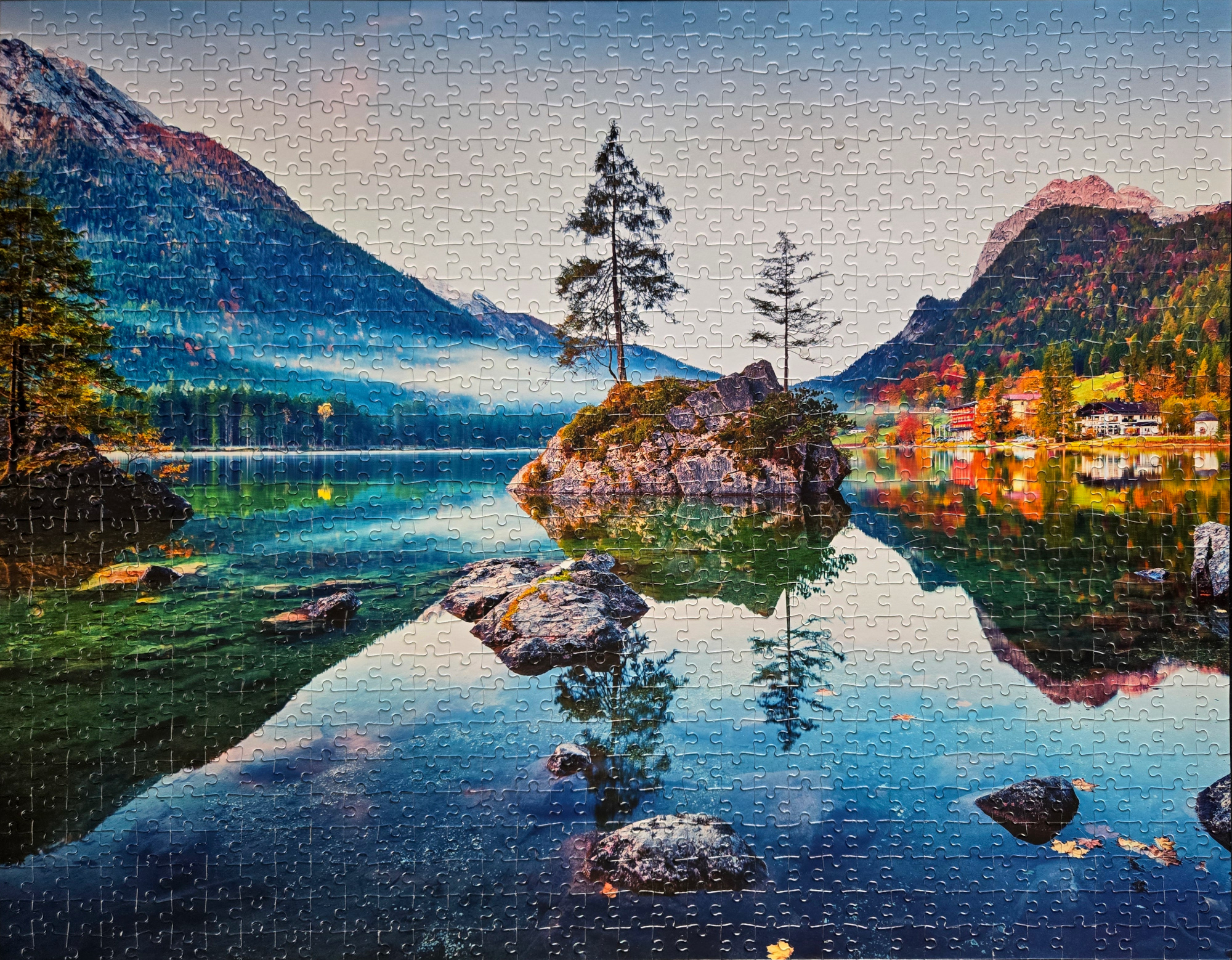
Size: 1000 pieces
Available for purchase on eBay
Dimensions: 54.6 cm x 69 cm
Manufacturer: Hinkler, P04716, HB22_JUL21_08
Photographer: Shutterstock
Box: photo
Gent, Belgium
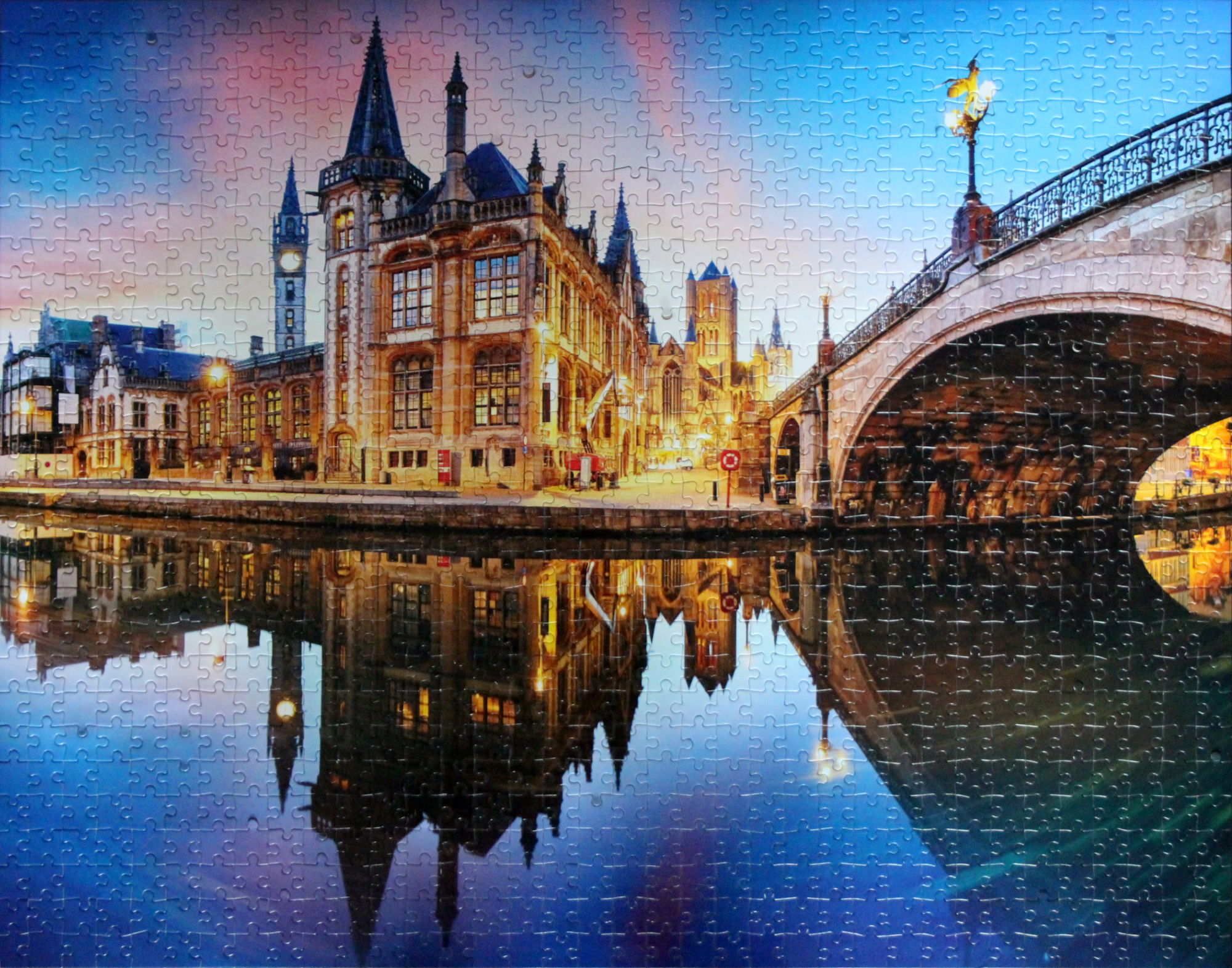
Size: 1000 pieces
Available for purchase on eBay
Dimensions: 54.6 cm x 69 cm
Manufacturer: Hinkler, P04393, HB22_JUL21_04
Photographer: TTstudio/Shutterstock
Box: photo
London, Big Ben
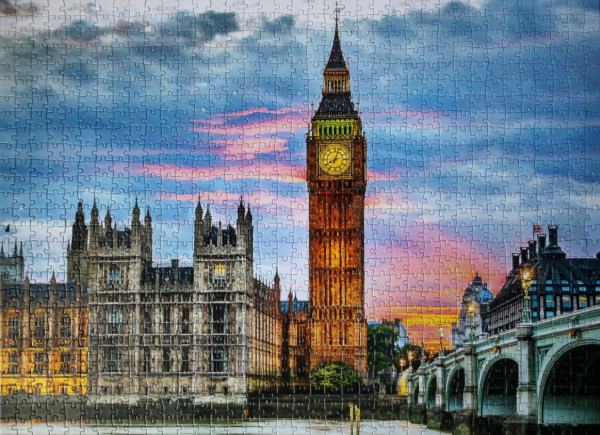
Size: 1000 pieces
Available for purchase on eBay
Dimensions: 48.89 cm x 67.63 cm
Manufacturer: Eurographics Puzzles, 6000-0764, 5788-12-20
Box: photo
Piemonte
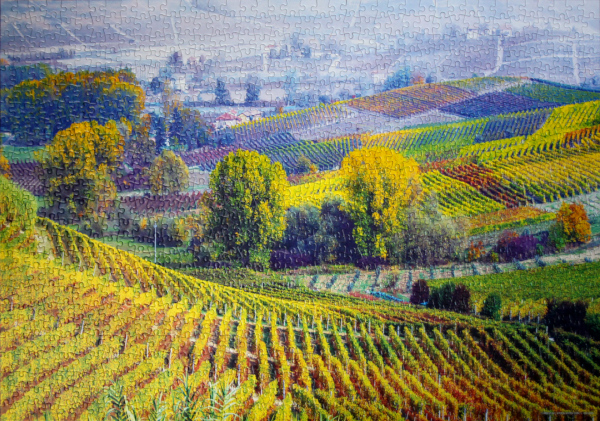
Size: 1000 pieces
Available for purchase on eBay
Dimensions: 48.26 cm x 68.58 cm
Manufacturer: The Canadian Group, #11123
Photographer: Freesurf/Stock.Adobe.com
Box: photo
Colmar

Size: 500 pieces
Available for purchase on eBay
Dimensions: 33.02 cm x 48.26 cm
Manufacturer: The Canadian Group, #10085
Photographer: Canadastock/Shutterstock
Box: photo
Mists of Venice
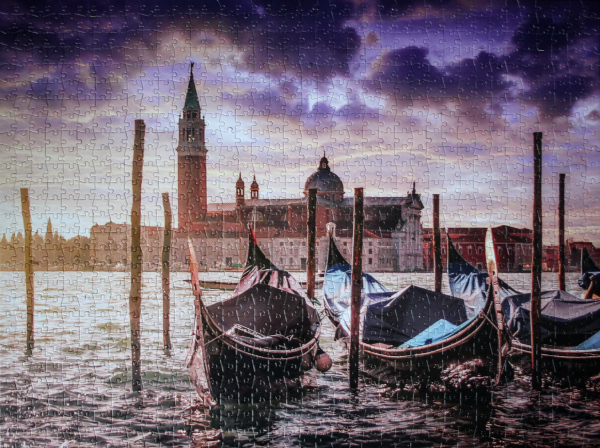
Size: 1000 pieces
Available for purchase on eBay
Dimensions: 50 cm x 68 cm
Manufacturer: Buffalo Games, 67
Photographer: Krenn Imre
Box: photo
Late afternoon in Italy
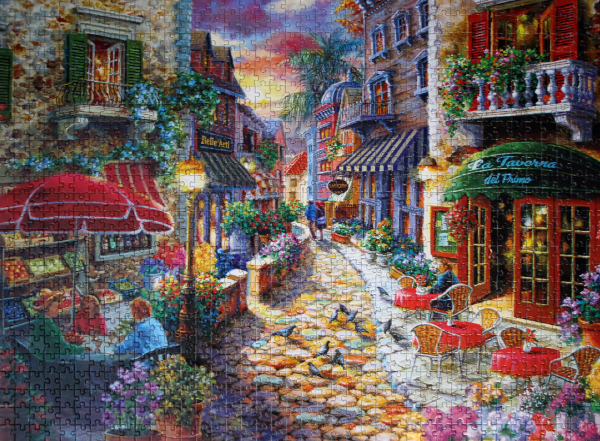
Size: 1000 pieces
Available for purchase on eBay
Dimensions: 51 cm x 68 cm
Manufacturer: Cra-Z-Art, #1600
Artist: Nicky Boehme
Box: photo
Notre Dame Cathedral in Paris
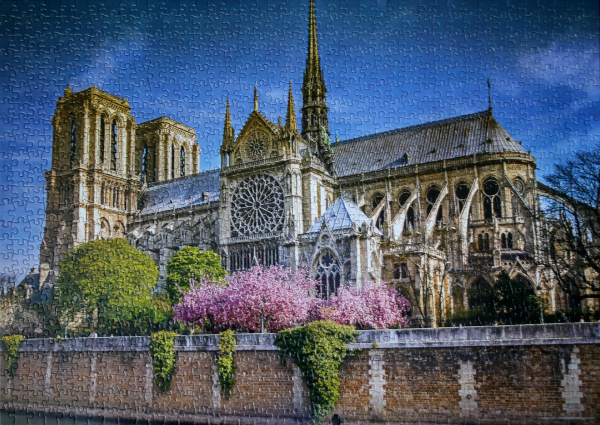
Size: 1000 pieces
Available for purchase on eBay
Dimensions: 48.26 cm x 68.58 cm
Manufacturer: The Canadian Group, #10226
Photographer: Didier Laurent
Original: photograph
Box: photo
Mediterranean Harbour
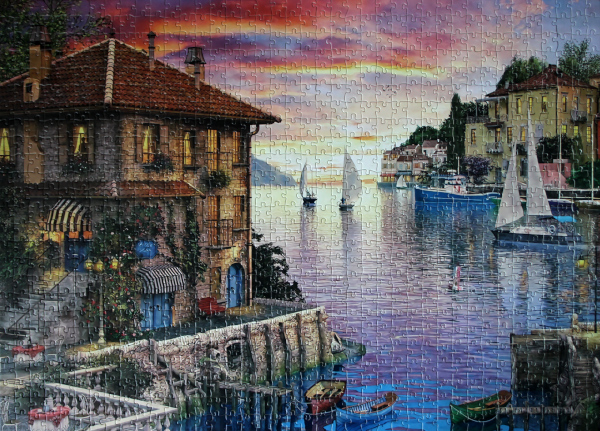
Size: 1000 pieces
Available for purchase on eBay
Note: I no longer have the box for this puzzle,
so if you could provide any more information
regarding the puzzle or the image, I would much appreciate it.
Box: photo
Cinque Terre Splendor
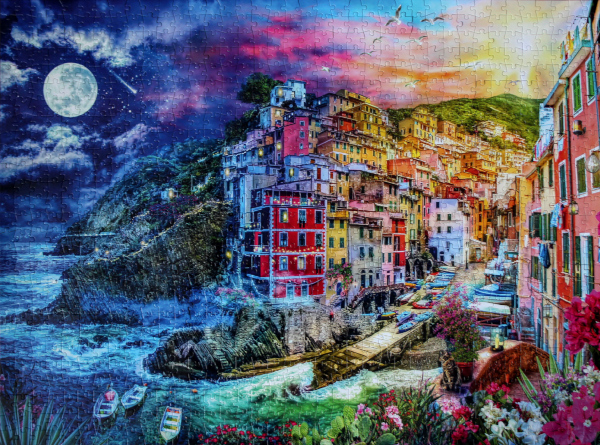
Size: 1000 pieces
Available for purchase on eBay
Dimensions: 50 cm x 68 cm
Manufacturer: Buffalo Games, 11840
Box: photo
Linderhof Castle, Germany
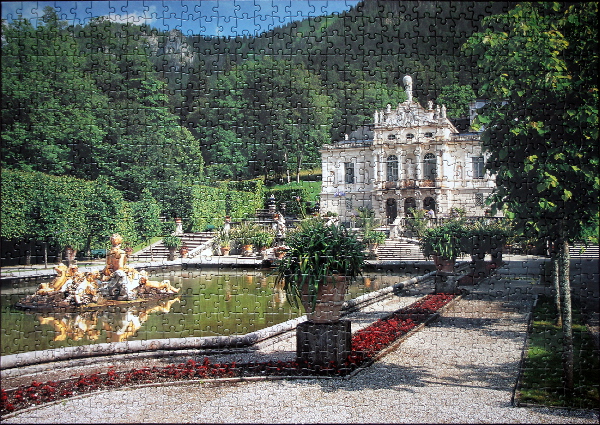
Size: 750 pieces
Dimensions: 68 cm x 48 cm
Manufacturer: RoseArt, No. 21030
Puzzle: Linderhof Palace is in Germany, in southwest Bavaria near Ettal Abbey. It is the smallest of the three palaces built by King Ludwig II of Bavaria and the only one which he lived to see completed.
The gardens surrounding Linderhof Palace are considered one of the most beautiful creations of historicist garden design, designed by Court Garden Director Carl von Effner. The park combines formal elements of Baroque style or Italian Renaissance gardens with landscaped sections that are similar to the English garden. [Wiki]
Lovely puzzle, the part with green trees and bushes takes a bit of time to assemble and benefits from having good lighting.
Good places to start: red flower bed, green water, pavement, staircases, the sky, and the building, then the fountain statues, flower pots, and the remaining paved areas. Once that’s done, finer distinctions in shade, hue, and texture are needed to complete the large tree in the foreground, the rest of the garden, and the trees in the distance.
Puzzle: European Riverbank
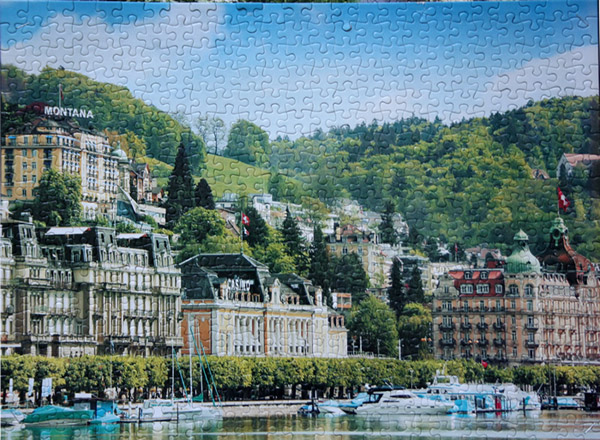
Size: 500 pieces
Dimensions: 48.26cm x 35.56cm
Producer: Sure-Lox, The Canadian Group, Impressions series
Notes: Hundreds of rivers and their tributaries cross the European continent. WorldAtlas highlights those over 600 miles in length, and a few others of note.
A riverbank or stream-bank: the terrain alongside the bed of a river, creek, or stream. [Wiki]
Click on a name of the river to trace its passage through Europe and see statistical information about it on the EurAtlas site.
Puzzle: Venice
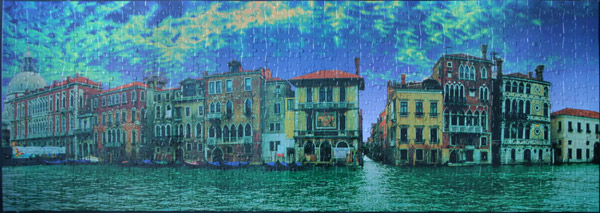
Size: 750 pieces
Dimensions: 86.36cm x 30.48cm
Producer: The Canadian Group, Sure-Lox, Panorific series
Notes: Venice (Italian: Venezia) is a city in northern Italy known both for tourism and for industry, and is the capital of the region Veneto, with a population of about 270,660 (census estimate 30 April 2009).
The name is derived from the ancient people of Veneti that inhabited the region as of 10th century B.C. The city historically was the capital of the Venetian Republic. Venice has been known as the “La Dominante”, “Serenissima”, “Queen of the Adriatic”, “City of Water”, “City of Masks”, “City of Bridges”, “The Floating City”, and “City of Canals”. Luigi Barzini, writing in The New York Times, described it as “undoubtedly the most beautiful city built by man”.
The city stretches across 117 small islands in the marshy Venetian Lagoon along the Adriatic Sea in northeast Italy. The saltwater lagoon stretches along the shoreline between the mouths of the Po (south) and the Piave (north) Rivers. [Wiki]
Puzzle: Normandy Harbour
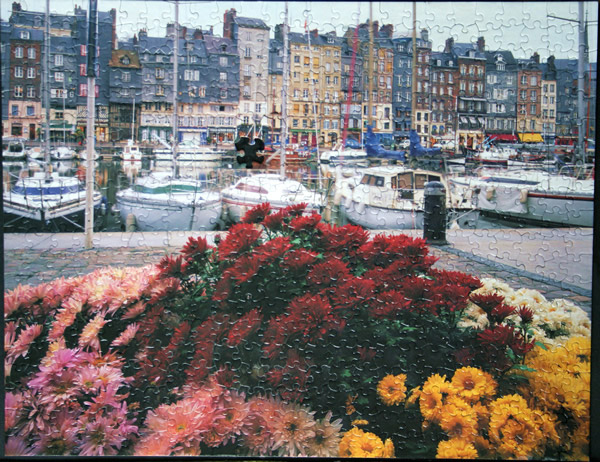
Size: 500 pieces, 1 missing
Producer: Puzzle World
Notes: Normandy (French: Normandie, Norman: Nourmaundie, from Old French Normanz, plural of Normand, originally from the word for “northman” in several Scandinavian languages) is a geographical region corresponding to the former Duchy of Normandy. It is situated along the English Channel coast of Northern France between Brittany (to the west) and Picardy (to the east) and comprises territory in northern France and the Channel Islands. The continental territory covers 30,627 km² and forms the preponderant part of Normandy and roughly 5% of the territory of France.
Parts of Normandy consist of rolling countryside typified by pasture for dairy cattle and apple orchards. A wide range of dairy products are produced and exported. Norman cheeses include Camembert, Livarot, Pont l’Évêque, Brillat-Savarin, Neufchâtel, Petit Suisse and Boursin. Normandy butter and Normandy cream are lavishly used in gastronomic specialties.
Normandy is a major cider-producing region (very little wine is produced). Perry is also produced, but in less significant quantities. Apple brandy, of which the most famous variety is calvados, is also popular. The mealtime trou normand, or “Norman hole”, is a pause between meal courses in which diners partake of a glassful of calvados in order to improve the appetite and make room for the next course, and this is still observed in many homes and restaurants. [Wiki]
Puzzle: Neal’s Yard, Covent Garden, London, England
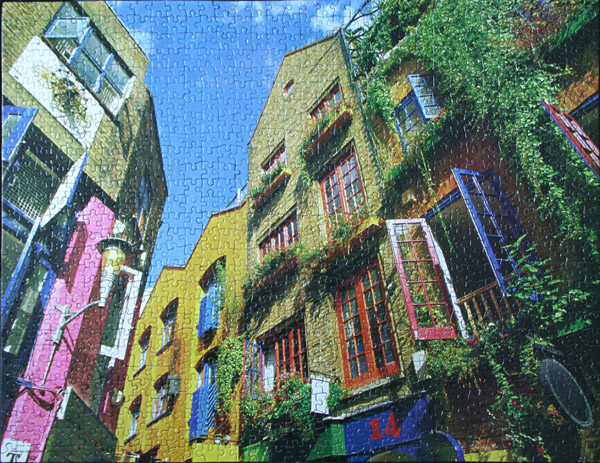
Size: 1000 pieces
Dimensions: 51.12cm x 66.52cm
Producer: Big Ben, MB Puzzles
Notes: Covent Garden is a district in London, England, located on the eastern fringes of the West End, between St. Martin’s Lane and Drury Lane. It is mainly associated with the former fruit and vegetable market located in the central square which is now a popular shopping and tourist site, and the Royal Opera House, which is also known as “Covent Garden”. The district is divided by the main thoroughfare of Long Acre; north of which is mainly given over to independent shops centred on Neal’s Yard and Seven Dials, while the south contains the central square with its street performers, and most of the elegant buildings, theatres and entertainment facilities, including the Theatre Royal, Drury Lane, and the London Transport Museum. [Wiki]
Puzzle: San Pietro by Rod Chase

Size: 500 pieces
Dimensions: 48.26cm x 35.56cm
Producer: The Canadian Group, Sure-Lox
Artist: Rod Chase, Photorealist
Painting: The Glory of San Pietro
Notes: This view is from across the Tiber River looking toward St. Peter’s. I spent the evening photographing this scene during the twilight hours on our last night in Rome. The composition is based on one specific photo while dozens of additional photos were used to provide details for the architectural features. I especially enjoyed painting the reflections on the water, an exercise in abstract line and shape. The colors were muted to faded blues and Terra Cotta tones, which provide a more monochromatic color scheme representing the incredible history and beauty in Rome, and Italy in general. [Rod Chase]





